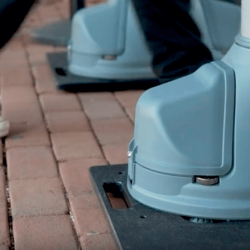Building a School Safety Plan
Creating a safe and welcoming learning environment is a priority shared by every school community. With ongoing concerns around school violence and increasing numbers of firearms in circulation across the United States, school districts are placing more emphasis on thoughtful, proactive planning that supports both student well-being and faculty readiness. While no single measure can fully prevent every emergency, schools can take important steps to strengthen their preparedness and responsiveness.
What Is a School Safety Plan and Why Is It Essential?
A school safety plan is a framework designed to guide how schools prevent, prepare for, and respond to a variety of emergencies. These plans typically align with expectations set forth by the U.S. Department of Education and local authorities, focusing on protecting lives, minimizing disruption to learning, and ensuring coordinated action during critical moments. By defining clear responsibilities and procedures, safety plans offer a foundation for both short-term response and long-term security management.
Foundational Elements of a School Safety Plan
Emergency Response and Preparedness
An effective safety plan includes an all-hazards emergency response strategy, accounting for incidents such as natural disasters, intruders, or medical emergencies. Schools benefit from coordination with local law enforcement, fire departments, and emergency management agencies. Practicing these responses through drills and tabletop exercises supports confident, coordinated action.
Threat Prevention and Early Detection
Threat prevention begins with a strong school culture that values communication, care, and early intervention. Behavioral intervention teams, anonymous reporting systems, and support for students’ social-emotional needs all play critical roles in identifying and addressing potential concerns before they escalate.
Physical Security Measures
Physical security is a visible layer of deterrence. This might include classroom door locking mechanisms, secure access control, visitor management systems, and strategic placement of security cameras. Schools often combine these tools to create controlled and monitored entry points without compromising the school’s sense of openness and inclusivity.
The Role of Weapons Detection in School Safety
Weapons detection tools have become a modern component of layered school security strategies. These technologies offer a way to discreetly monitor for potential threats during the school day or at high-traffic events without significant interference in daily routines.
With the increasing availability of firearms, it’s understandable that schools are evaluating tools that help identify threats more effectively. According to recent data, over 512 million firearms have been produced for the U.S. market since 1899, with more than 392 million estimated to be in circulation today. In this landscape, identifying what level of screening is appropriate becomes a key part of any security planning conversation.
How CEIA OPENGATE® Supports Safer School Environments
CEIA USA offers a range of tools for school safety teams, including the OPENGATE® weapons detection system. This tool is designed to fit flexibly into school entry procedures, whether during morning arrival, random screening initiatives, or large events. OPENGATE® can be positioned quickly (in under a minute) without the need for permanent installation or specialized staff training.
What sets this system apart is its high throughput and ability to reduce unnecessary alarms while helping staff focus on the items that matter most. Students can walk through with backpacks, and the system provides immediate, visual indicators for staff without creating delays or backups. This supports a more consistent flow during busy entry times while contributing to a broader culture of security awareness.
Building Detection Into the Plan
School leaders can explore how detection tools may be woven into their daily operations. Whether it’s part of a morning routine, used during specific after-school events, or integrated periodically through random screenings, the flexibility and portability of tools like OPENGATE® allow schools to adapt their strategies to match evolving needs and threat environments.
Developing and Implementing the Safety Plan
Building a thoughtful plan requires input from a wide group of stakeholders, including administrators, teachers, students, families, and law enforcement. Planning together ensures the school’s unique vulnerabilities and strengths are factored in.
Ongoing training and regular drills reinforce readiness. Schools that revisit and update their plans after each drill or real incident are better equipped to stay ahead of changing risks and regulations.
Conclusion
There’s no perfect blueprint for ensuring school safety, but a thoughtful, layered approach rooted in collaboration, preparedness, and modern tools can go a long way. By combining physical security, behavioral supports, emergency readiness, and adaptable detection tools like CEIA’s OPENGATE®, schools can shape safer environments where students and staff can focus on learning and connection.
For more information or to explore how OPENGATE® might support your district’s safety strategy, connect with our K-12 team. We’re here to share what we know and help you find the right tools to meet your goals.
Gallery








